Let me tell you a story that brings a bit of humanity and coming together during a Pandemic. Not exactly to save lives, but close enough...
So here we go... Our neighbor has 8, maybe 9, possibly 10 cats... Oh, and there's a special guest or two...
So here we go... Our neighbor has 8, maybe 9, possibly 10 cats... Oh, and there's a special guest or two...
For the past several years, we haven't given them much notice.
They'd go inside, spend some time outside. Our dog Willie gave them attention...a side-eye during every walk, and an attempt to catch us by surprise and dart after them every once in a while...
They'd go inside, spend some time outside. Our dog Willie gave them attention...a side-eye during every walk, and an attempt to catch us by surprise and dart after them every once in a while...
About 3 months ago, we noticed they were outside, all the time. And that there were a food and water bottle on the outside of her fence. That was a bit strange.
We stopped seeing our neighbor, who didn't know besides a wave here or there. She's an older woman in her 70's who lived alone. We assumed she went with her family during COVID-19.
Every morning and evening, there would be new water and dry cat food in the bowls. Then, over time, canned wet cat food began to appear.
On the other side of the house, more food appeared to feed the 2-4 cats who seemed to be ostracized from the gang of 6(docile, friendly bunch)
On the other side of the house, more food appeared to feed the 2-4 cats who seemed to be ostracized from the gang of 6(docile, friendly bunch)
About a month or so ago, my fiance felt bad for the cats, seeing no owner there.
She decided to feed them slices of lunch meat (roast beef is their favorite) and eventually bought actual cat treats. 2 to 3 times a day, she makes the short trek down the street to feed the cats.
She decided to feed them slices of lunch meat (roast beef is their favorite) and eventually bought actual cat treats. 2 to 3 times a day, she makes the short trek down the street to feed the cats.

I should mention that the 8, 9, or possibly 10 cats aren't the only animals living at this ladies house. There are 2 raccoons who live under the house. They come out at night to try to swipe some food. The cats seem unphased.
And then there's this guy... Mr. Possum.
He showed up at my door unannounced one evening. I opened my front door to go check the mail. I have a 2nd gate, so my head was down, as I put the key in to unlock it. I glance up, and staring me right in the face is this guy...
He showed up at my door unannounced one evening. I opened my front door to go check the mail. I have a 2nd gate, so my head was down, as I put the key in to unlock it. I glance up, and staring me right in the face is this guy...
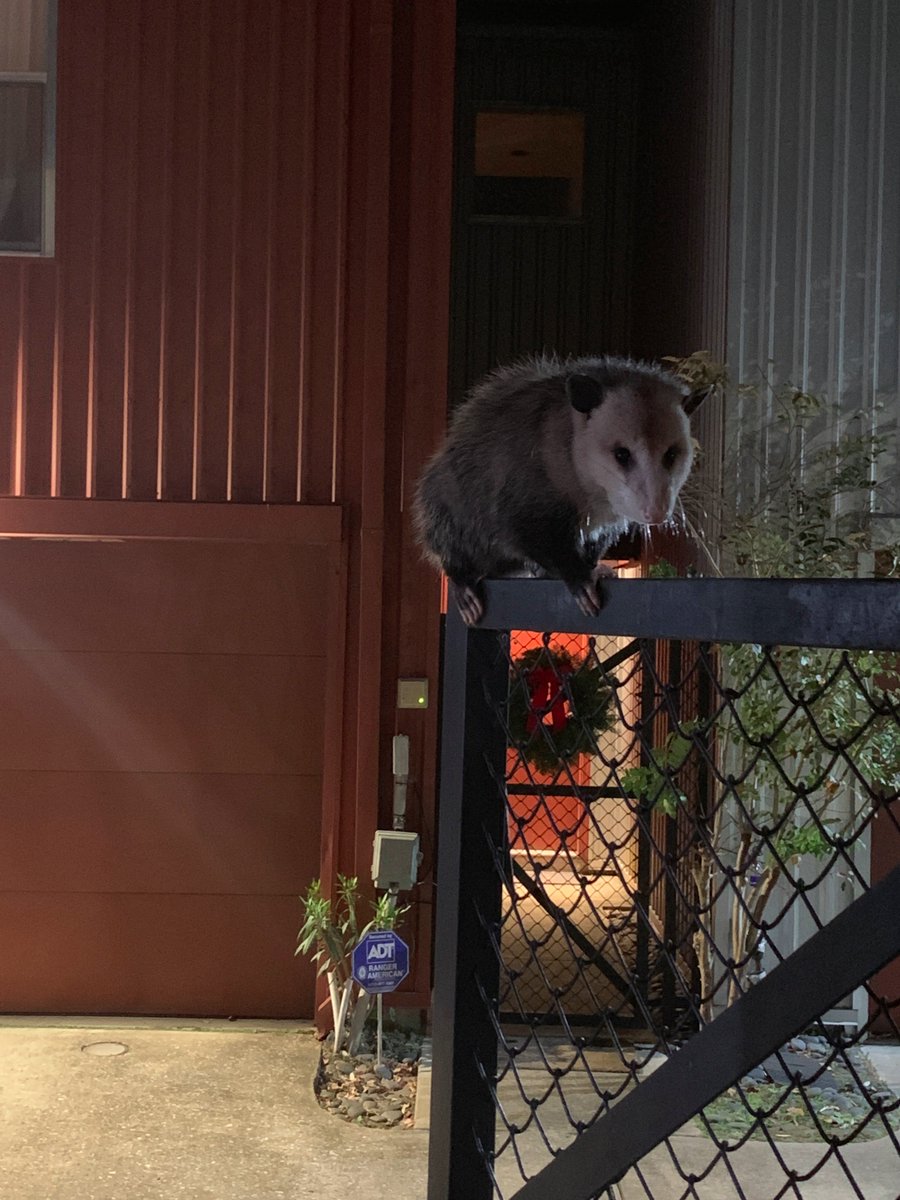
I'll admit it...I screamed "Oh $%$%" and then he sat there, on the fence for 3+ hours...Anyway, I wondered how Mr. Possum got to the middle of Houston, but now I know. He lives at the house too. It's a crowded place...
The sad part of the story is last week, we found out that the old lady had died. Not recently but 4 months ago...These cats have been alone for months. We don't know any other details than that. Her obituary listed no family members.
Today, we walked up and this sign was there. And it struck me. For 4 months, a group of random strangers have been feeding these cats. Not just one person, but a collection of random people who have never met each other. 
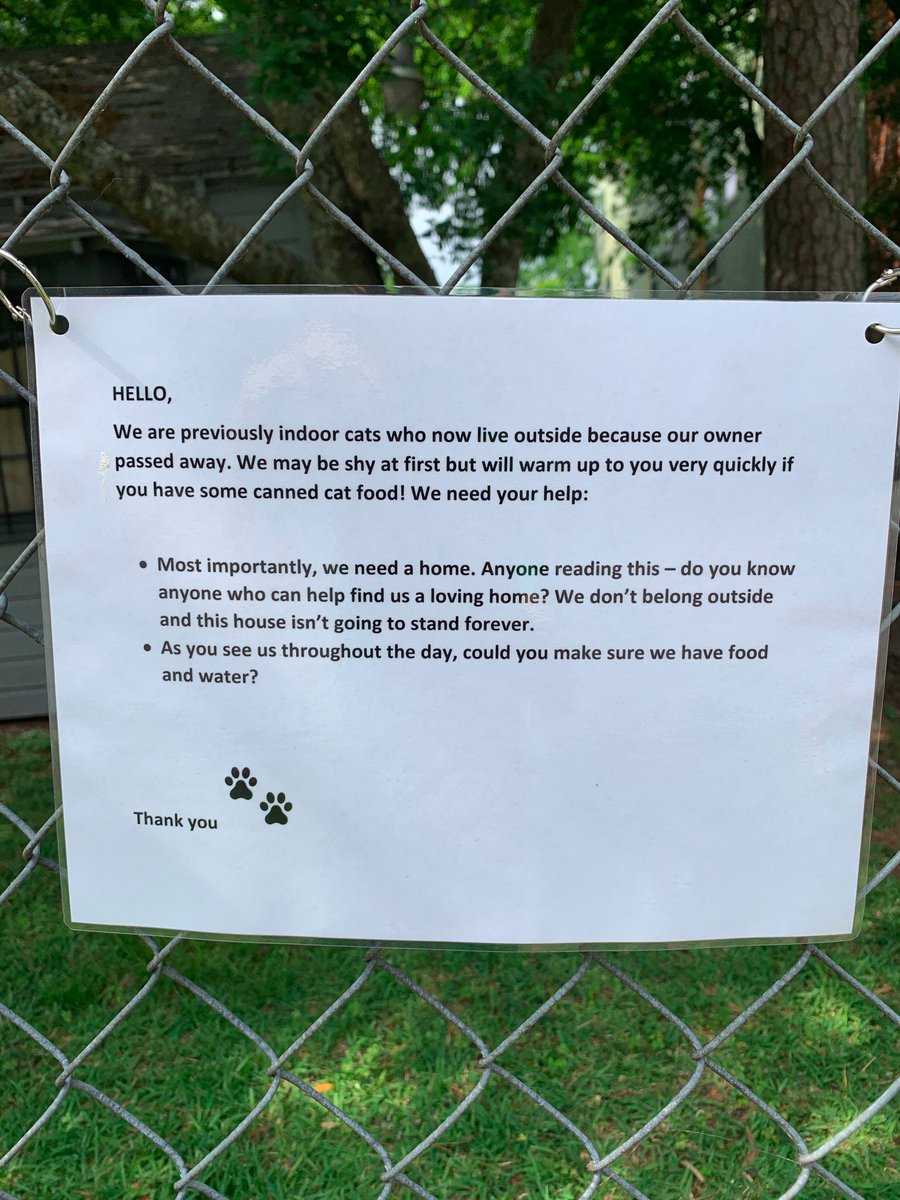
I've never talked to the other cat feeders. I've caught a glimpse while driving by every once in a while of a few, and other times have run by other couple feeding them different treats. Point is, for months people have been taking care of these random cats.
So, here are the cats... If you know of anyone in Houston, who wants some cats, let me know.
I'm allergic to cats & we have a dog, Willie, who if he was a kindergartner his teacher would describe him as "Smart, mischievous, kind when alone, but doesn't play well with others."
I'm allergic to cats & we have a dog, Willie, who if he was a kindergartner his teacher would describe him as "Smart, mischievous, kind when alone, but doesn't play well with others."
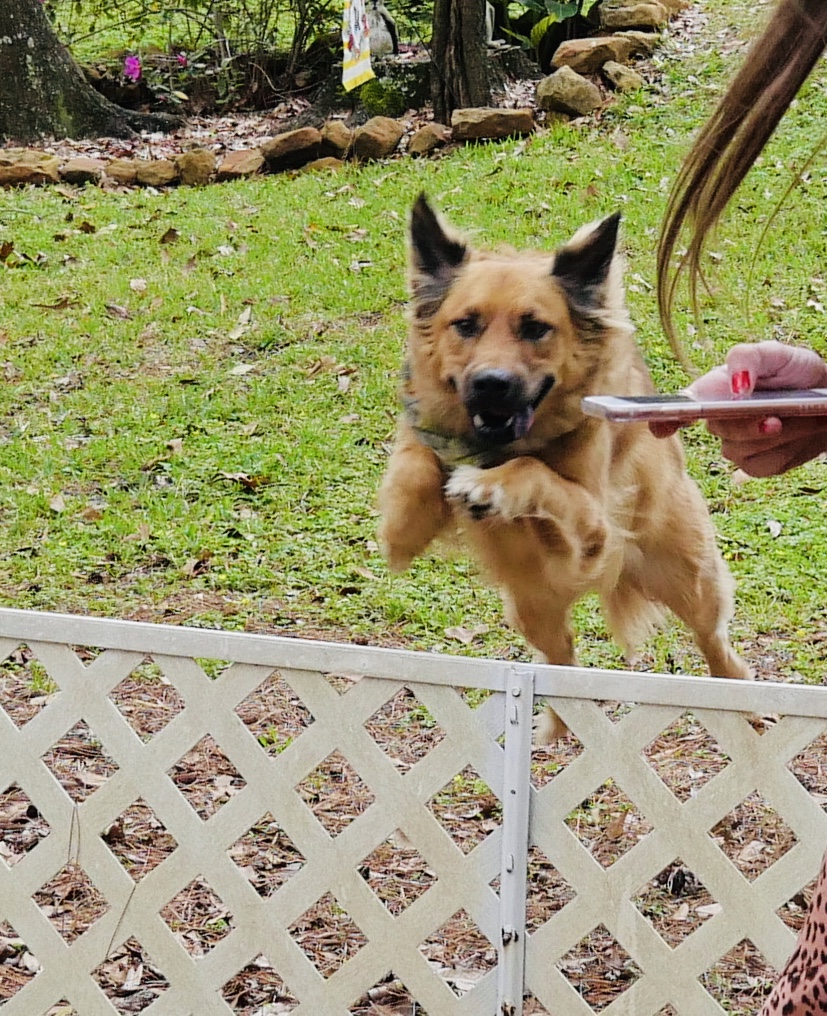
Lucifer... no that's not his name. I hope, at least. But my fiance called him that initially because he has huge fangs... But he's one of the sweetest and friendliest cats. He's a little older, we think, but he is always the first to greet you. 
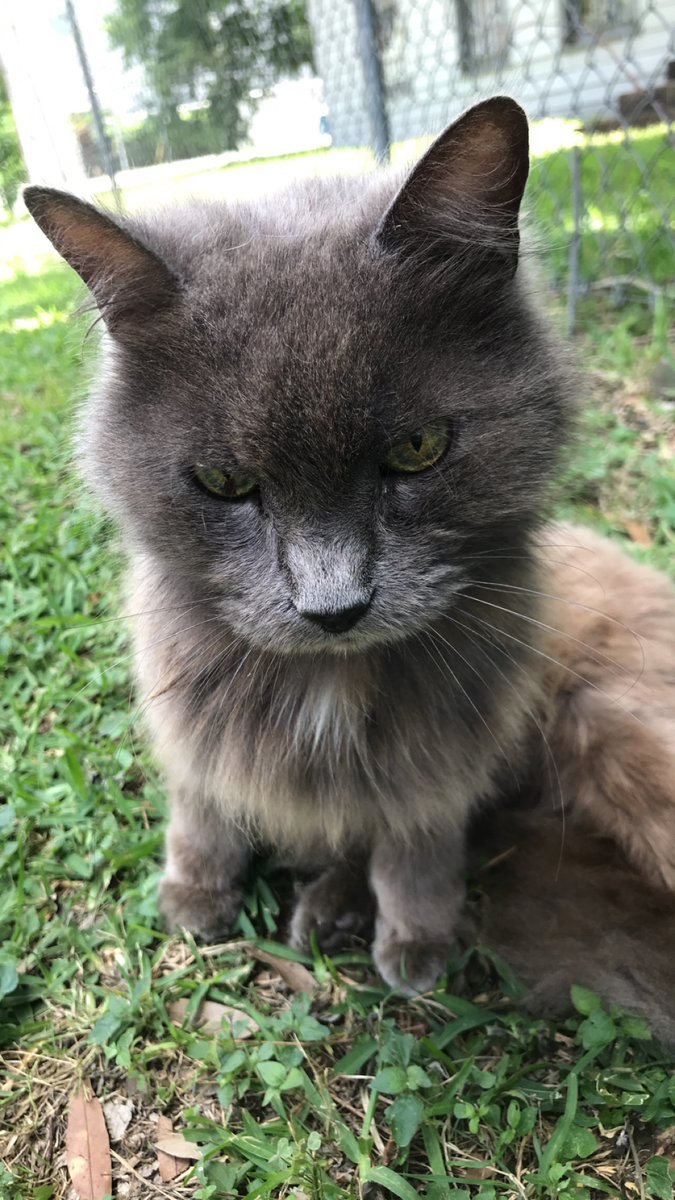
Grey Cat- This one is like a dog. Wants to be held, pet, and play. The other day he or she played hide and seek with us. She's a younger cat, maybe 1 year old? 


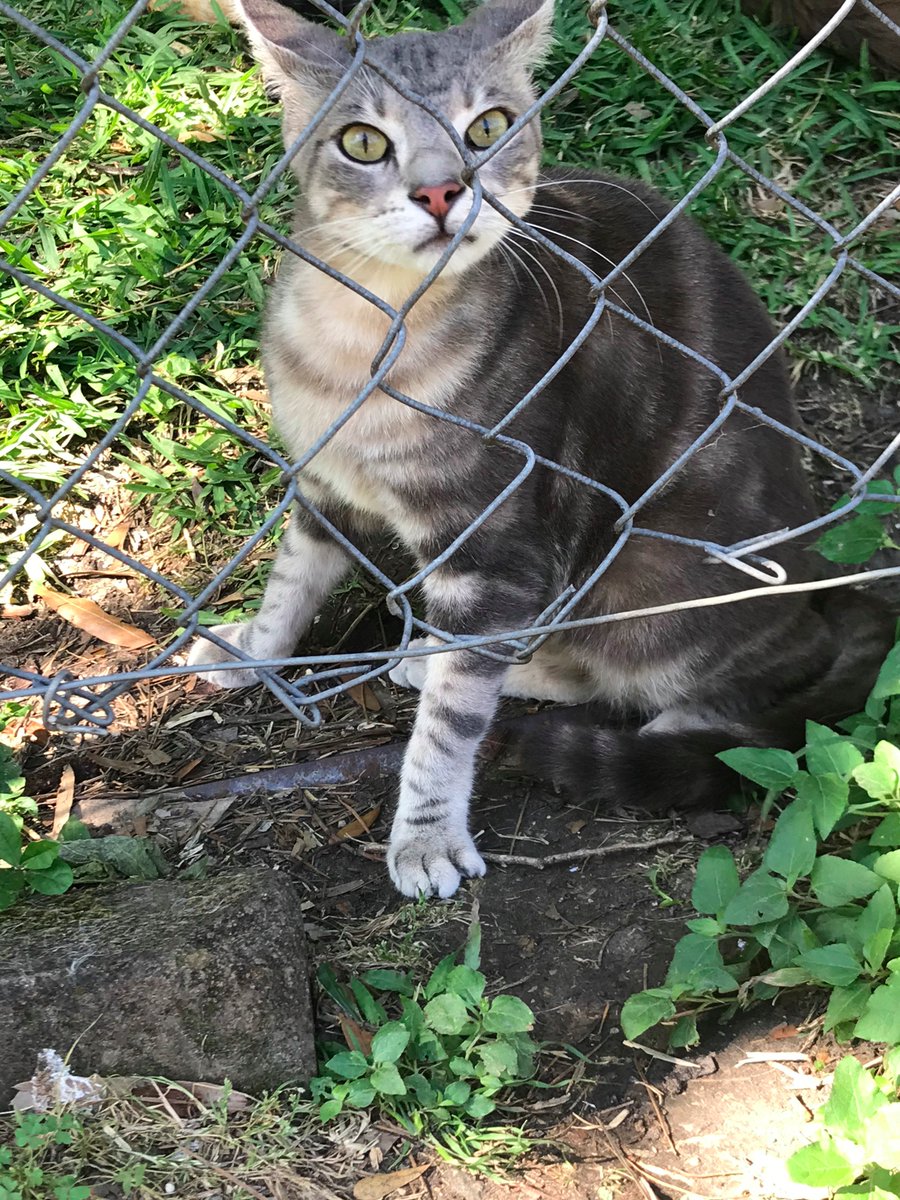


White cat- This one's a little shy and is very underfed. The smallest of the bunch. Loves turkey and roast beef. She's a younger cat. 

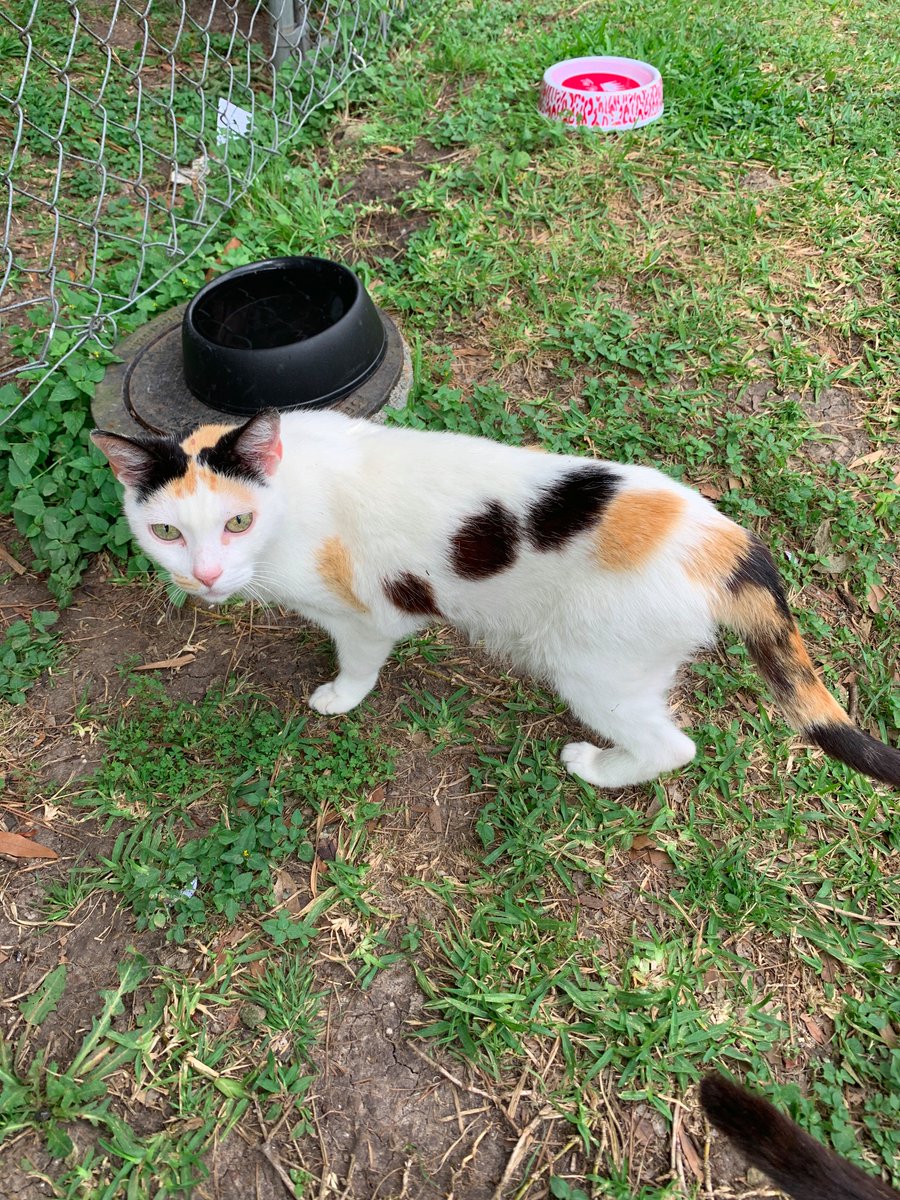
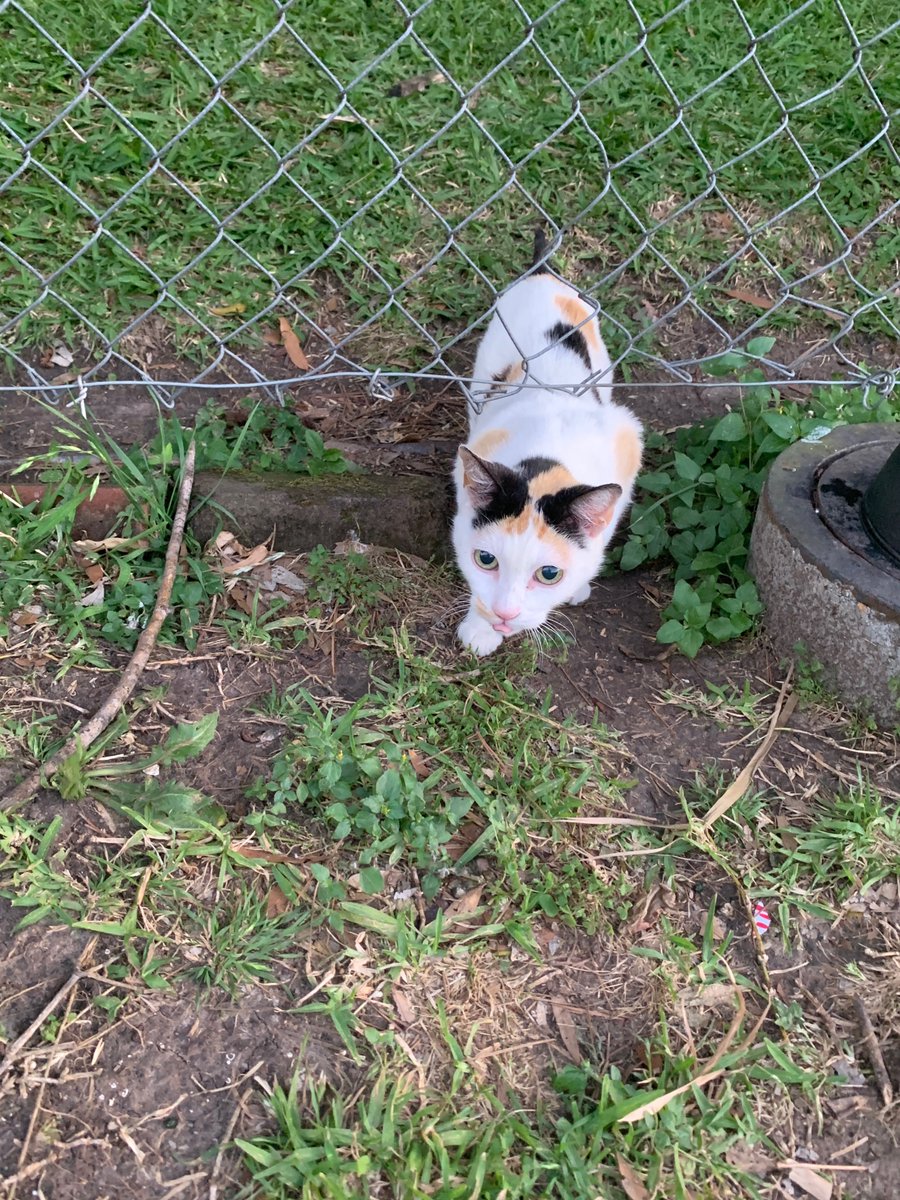
Big Black cat- A playful one, loves dangled keys and sticks to paw at. This cat loves to have it's head pet and will sit in your lap. 
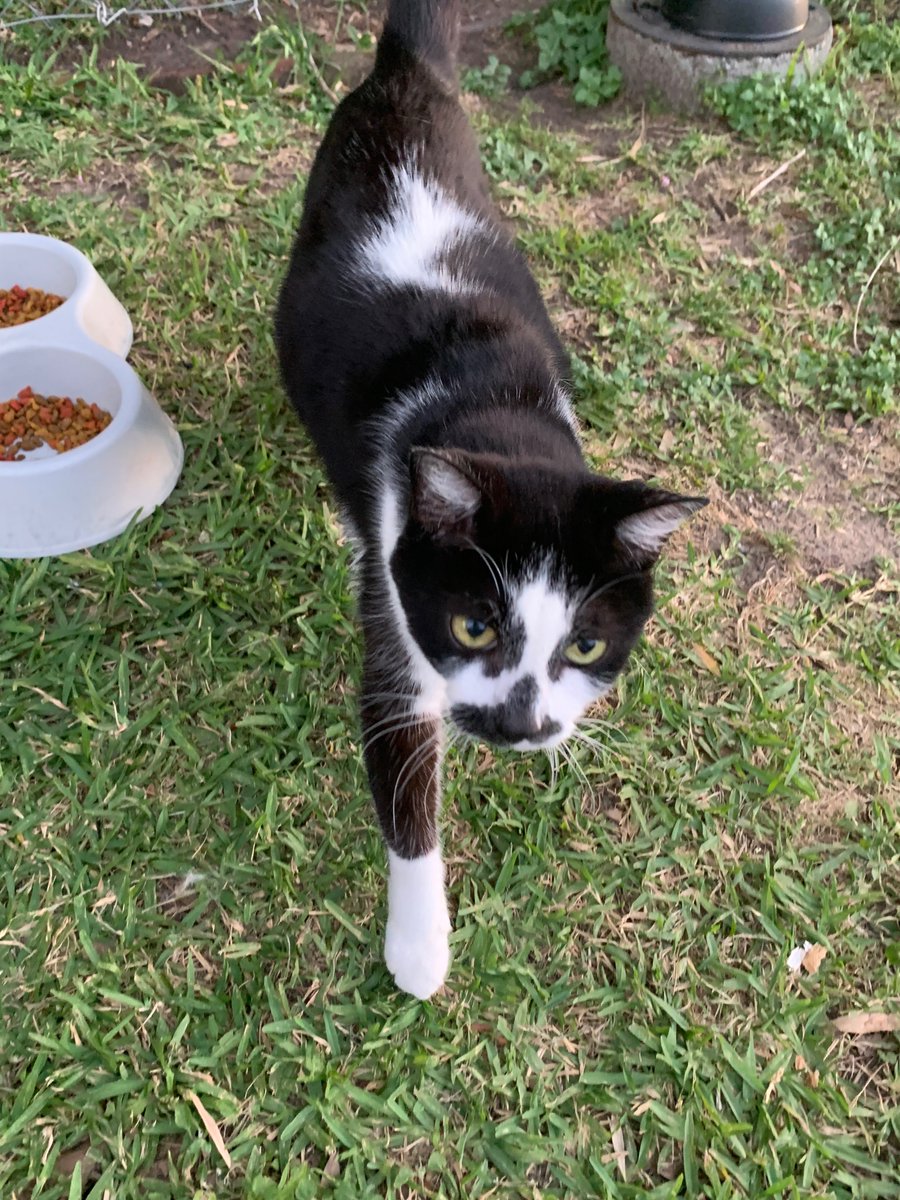
Little Black Cat: She loves tuna, has a cute freckle on her nose, and enjoys sitting in laps. She's a younger cat. 

Orange cat- He's the observer. He hangs out in the pack, and waits until the others eat before he get his share. I like to think of him as the put others before myself cat. 

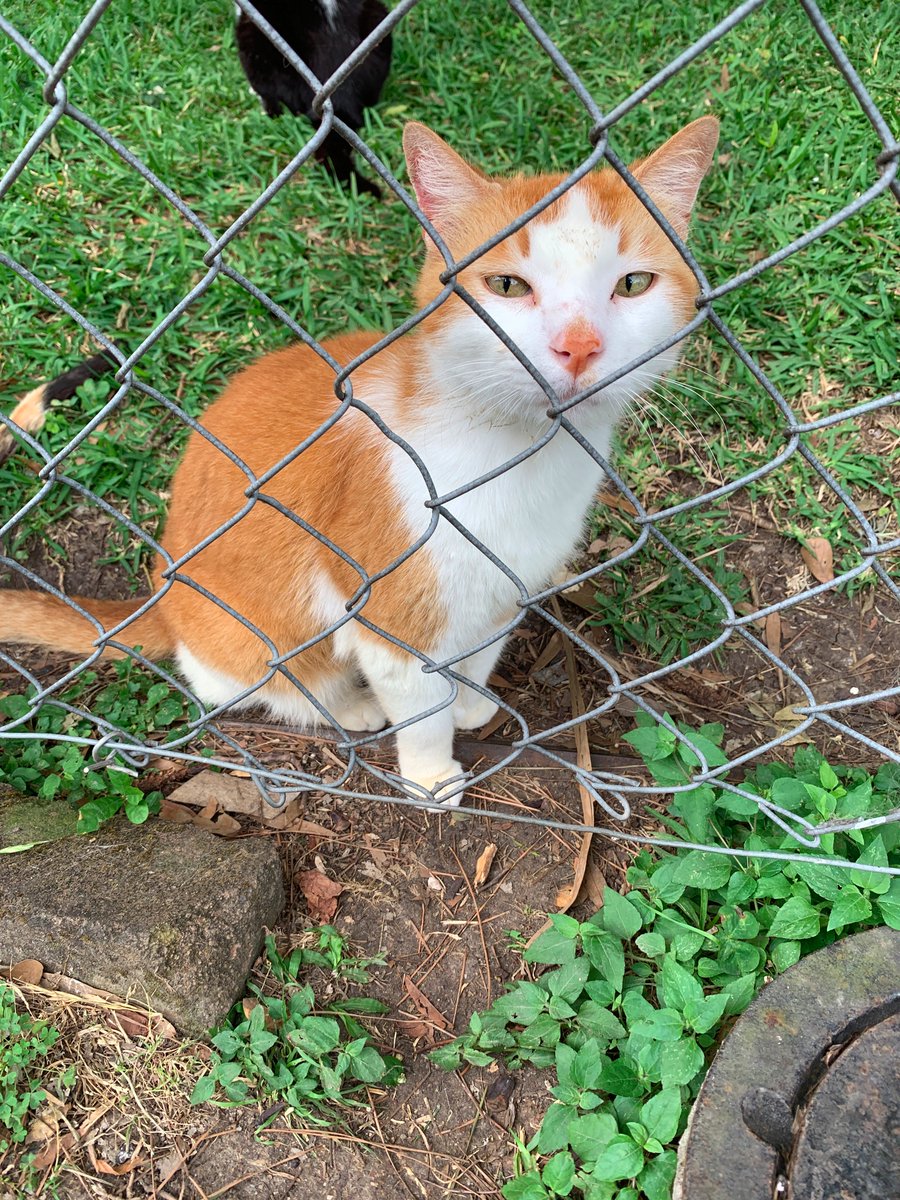

There are a few others, but they spend more time with the raccoons than with the humans. This is All black cat and wild Grey cat. They eat on the raccoon side of the house. 

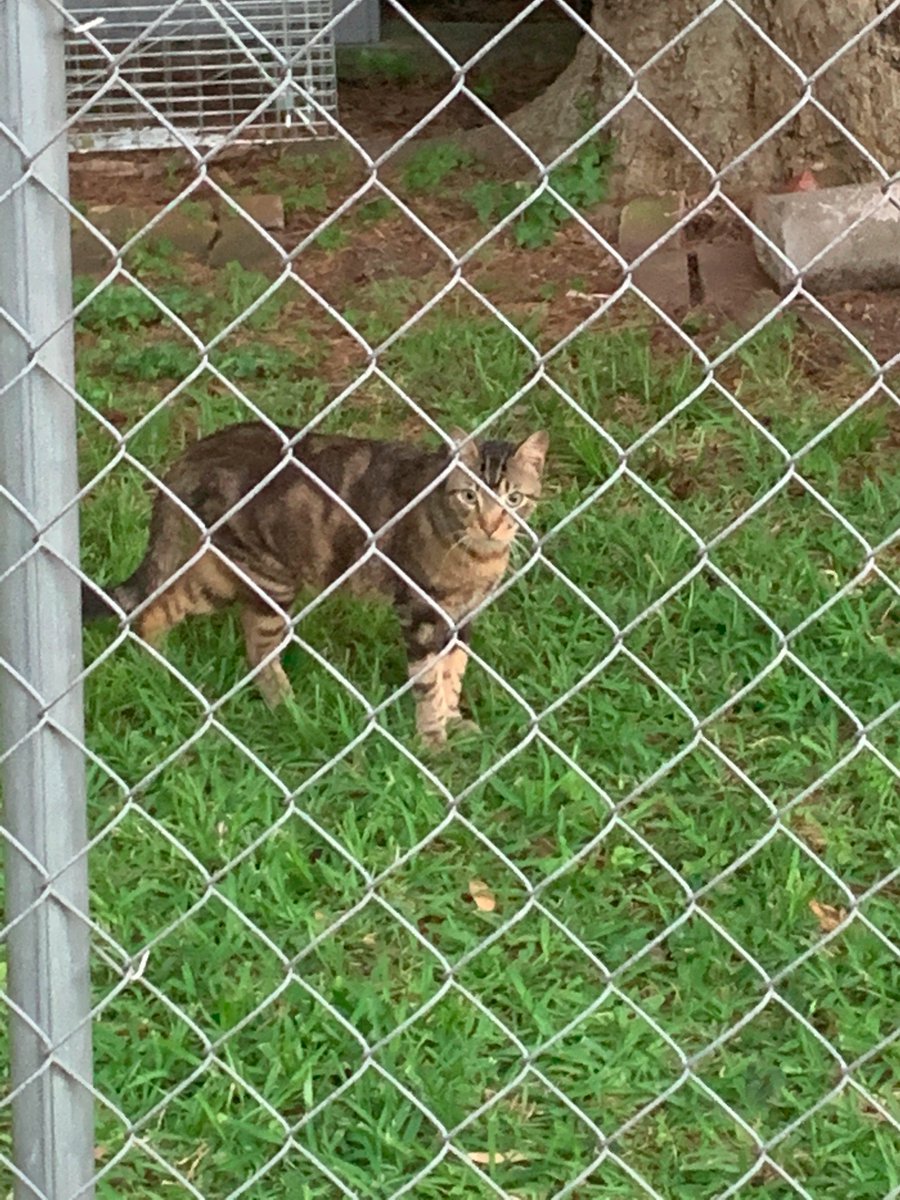

So there you have it. How 8, 9 or 10 cats, 2 raccoons, & a possum all live in the same house. And how a group of strangers came together to keep the cats and I guess raccoons & a possum, alive.
If you know anyone looking for cars, let me know.
If you know anyone looking for cars, let me know.

@threadreaderapp unroll thread.
• • •
Missing some Tweet in this thread? You can try to
force a refresh





